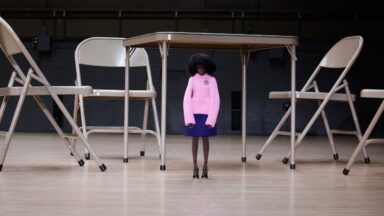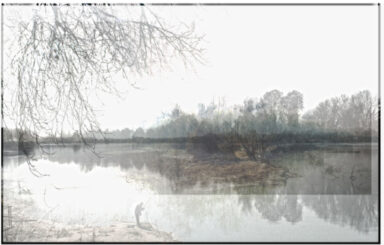From 8th of March 2017 the exhibition THE PHILOSOPHER’S NIGHT, About The Minotaur, by Maurizio Barberis will be on show at the Consulate General of Italy in New York.
Three series of photographs, three image narratives to construct a single story on the mysterious figure of the Minotaur, which from the shores of ancient Crete spreads through the idea of the Labyrinth, a persistently vivid myth for all modern and contemporary art and culture.
An exhibition of 30 Italian images, curated by Patrizia Catalano , each made by assembling multiple shots taken in different moments, in different places, converging in a single photograph that conveys a new meaning of the mythical tale. The exhibition is divided into three photographic series: La Nuit, Under a Red Sun and Enargeis (Epiphany).
Maurizio Barberis describes his work as follows:
Docta Ignorantia.
In every moment, the life of man is marked by a mutable, bizarre destiny. Of the infinite lives we might be able to live, only one seems to guide us towards what seems to be our definitive path, in all its abundant clarity. But that is actually not the case. Of the infinite possible developments that open out before our eyes in every moment, in the illusion of our free will, we grant ourselves the luxury, at times guided by the coercion of our reason, of designing a possible future. A single, indivisible Ariadne’s thread leads us towards the choices we make, as each path divides before us, with conscious ignorance (docta ignorantia?), with the embarrassing goal of getting us closer to some truth that will finally open the doors to the world in which we live, as newly minted Fausts.
Getting the future right, at first shot, is not for us. But does a future really exist?
Entropy.
This curious word, mediated by theoretical physics, has taken on a sinister tone in the current repertoire of metaphors, linked essentially to the idea of the death of the universe. Only a few, the best informed, associate this term instead with the flow of time, or more precisely the idea of the irreversibility of time, a condition that belongs to our world but is already shuddering in the universe of subatomic particles. When an egg is broken it cannot be put back together to wind up back inside the chicken that produced it. The level of entropy of the world constantly increases and is connected to the unidirectional flow of our time. Our time, precisely. A classic example is that of the book tossed into the air. Free of their binding, the individual pages separated from their temporal sequence, launched into the air like confetti… what is the probability of their random reordering? It would be an infinitely small number, something like a billionth of a billionth of a billionth, and so on. Infinitely small, yet nevertheless possible. But all the other billions of combinations constitute the universe of all the books a different combination of pages could offer to the reader. What does time have to do with it? Plenty, if for example we try to think about an intelligence capable of seeing and deciphering, simultaneously, all the possible combinations of the original book. What I mean is that for a fraction of a second, while those pages are floating through the air, entropy is suspended, time is suspended, and we are in the condition of an eternal present that simultaneously offers all the possible evolutions of infinite and theoretical future worlds.
The “nuit philosophique”?
There it is… my work positions itself exactly in this instant of temporal suspension, presage of infinite possible stories. Like a little demiurge I have summed up in a single image, in an apparent unit of time, multiple images taken in different moments, thus granting a new, possible, feasible meaning to sequences that taken in their “real” time would lend themselves to a very different interpretation. But this is only the technical, more superficial aspect.
The true philosophical-demiurgic work consists of managing to accompany every single image towards a destiny, which the more it pertains to the image, the more it determines its character.
THE PHILOSOPHER’S NIGHT
About The Minotaur
8 March 2017 6pm-8pm
Consulate General of Italy in New York 690 Park Avenue, 10065, New York
The exhibition will be open to the public from 9 March to 19 May by appointment.
About Maurizio Barberis:
He has shown his work in Italy and abroad. Under the pseudonym Henry Thoreau, he has collaborated as a photographer for many years with architecture and design magazines like Interni. His photographs have appeared in many international publications (World of Interiors, AD France, AD Italia, Elle Decor Germany). He has published many photography books with Mondadori, Electa, Damiani Italia and Rizzoli New York. He received a prize for best photography at the Venice Architecture Biennale in 2012.
About Patrizia Catalano:
A journalist specializing in interior design, architecture and the visual arts, she is in charge of the supplements of the magazine Interni for the news-magazine Panorama. She has written many books, including Belpaese: Interior Italia (pub. Mondadori Arte), Casa Italiana (Rizzoli International) and Living Today (Electa).
About Mariangela Tessa:
Mariangela Tessa is a journalist living in New York since 2012 where she writes and edits for online and print media. In her career she has held the editor position in some of most relevant financial and economic Italian newspapers.


